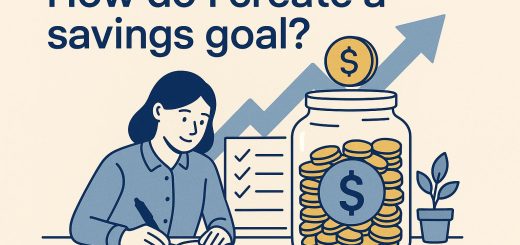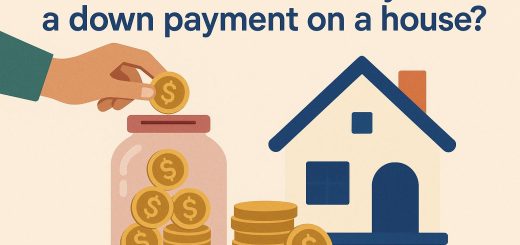What are the best ways to save money quickly?
Understanding Your Financial Situation
Gaining a comprehensive understanding of your financial situation is fundamental to improving your monetary health. Before diving into any money-saving tactics, it is essential to have a clear grasp on your current income, expenses, and how much you’re able to save. This foundational knowledge is critical as it sets the stage for formulating effective and sustainable financial strategies.
Analyzing Income: Begin by assessing your total monthly income. Consider not just your primary salary but also any additional income streams such as bonuses, rental income, or part-time work. Knowing your net income—that is, what remains after taxes and other deductions—is pivotal in creating a realistic financial plan.
Examining Expenses: Once income is clearly delineated, shift focus to your expenditures. This includes fixed expenses such as rent or mortgage payments, utilities, and car payments, as well as variable costs including groceries, entertainment, and dining out. By listing these, you begin to construct a picture of where your money is going each month.
Identifying Savings Potential: The next step is identifying potential savings. This means analyzing your spending patterns to find areas where expenses can be cut back. This exercise is often eye-opening and provides insight into spending habits that were previously overlooked.
Creating a Budget
A budget is an invaluable tool in personal finance management. It not only helps in tracking spending but also sets a framework for fiscal discipline. To establish an effective budget, start by comparing your income against your expenses to determine whether you are operating at a surplus or deficit.
Steps to Create a Budget: Begin by categorizing your expenses into fixed and variable costs. This helps in understanding which aspects of your spending are necessary and which can be adjusted. Assign a realistic spending limit to each category that aligns with your income and savings goals.
Monitoring and Adjusting the Budget: After the budget is set, it’s critical to consistently monitor your spending. This involves keeping track of every transaction, be it via apps, spreadsheets, or pen and paper. Periodically review your budget and adjust as necessary to accommodate new financial objectives or unforeseen expenses.
Reduce Unnecessary Expenditures
A critical aspect of saving money is identifying and eliminating unnecessary expenses. This can involve revisiting monthly expenses and reevaluating their necessity and impact on your financial health.
Dining and Subscriptions: Two common areas ripe for cutbacks are dining out and recurring subscription services. Consider cooking more meals at home to significantly reduce your dining costs. Regarding subscriptions, audit your current services and evaluate their utility. Cancel those that are seldom used or not cost-effective.
Needs versus Wants: A practical exercise in minimizing costs is differentiating between needs and wants. Needs are essentials such as housing and utilities, while wants are non-essentials like luxury clothes or dining at expensive restaurants. By prioritizing needs, you can accumulate savings more rapidly.
Utilize Discounts and Coupons
Taking advantage of discounts and coupons is a strategic way to save money. Retailers frequently offer promotions that can result in substantial discounts on purchases.
Online Resources: There are numerous websites and mobile applications dedicated to aggregating coupons for a wide array of products. These platforms can help you find deals and discounts that you might not be aware of otherwise.
Shopping Strategy: Timing your purchases to coincide with store sales or using cashback programs also enhances savings. Develop a habit of planning your transactions to maximize discount opportunities.
Implement Energy-Saving Practices
A considerable portion of monthly spending often goes toward energy costs. By adopting energy-efficient practices, you can effectively lower these expenses.
Home Adjustments: Simple changes in your home can lead to significant energy savings. For example, switching to energy-efficient light bulbs and ensuring appliances are unplugged when not in use are easy yet effective methods. Additionally, using programmable thermostats to regulate heating and cooling can contribute significantly to reducing utility bills.
Long-term Benefits: Though these adjustments might seem modest individually, collectively they amount to meaningful reductions in your energy expenditure over time.
Boosting Income Streams
While cutting expenses is vital, increasing income can further accelerate savings. This involves exploring additional avenues beyond your primary job for generating income.
Exploring Side Gigs: Side jobs or freelance work are excellent ways to supplement your income. This could include pursuing freelance work in your field of expertise or opting for roles that offer flexible hours, such as tutoring or ride-sharing.
Monetizing Hobbies: Consider turning a hobby or skill into a lucrative side business. Whether it’s selling handmade crafts online or offering lessons in music or art, monetizing your passion can provide a rewarding source of additional income.
By focusing simultaneously on both reducing expenses and increasing income, the potential for savings grows exponentially. These strategies, when employed consistently, pave the way for healthier financial management and future security.
For further details on effective budgeting and financial management strategies, consider visiting NerdWallet or The Balance, which offer comprehensive resources in personal finance management.
This article was last updated on: July 30, 2025






